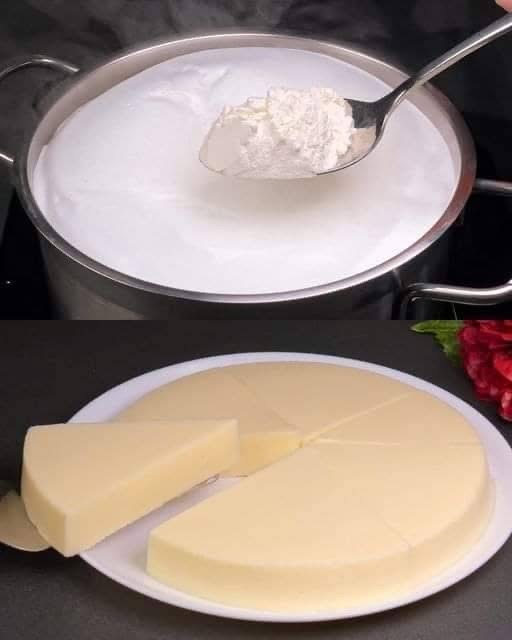Here’s a comprehensive guide to making **Homemade Cheese**, covering everything from its origins to tips for success. Making cheese at home is a rewarding process, offering a delicious and wholesome product that you can customize to your liking.
—
### **Introduction and Origin**
Homemade cheese is a time-honored tradition dating back thousands of years, believed to have originated in the Middle East or Central Asia when early herders noticed milk curdling in animal stomachs. From there, cheese-making spread to Europe, where it evolved into the countless varieties we know today. Making cheese at home is both simple and satisfying, resulting in fresh, flavorful cheese that can be used in countless recipes.
### **Cultural Significance**
Cheese holds an important place in many cultures worldwide, from Italian mozzarella to French camembert and Indian paneer. It represents culinary innovation, resourcefulness, and regional pride. Homemade cheese-making reconnects us with these traditional practices, allowing us to better appreciate the art and science behind cheese.
—
### **Ingredients Quantity**
– **Basic Ingredients:**
– 1 gallon whole milk (preferably fresh, not ultra-pasteurized)
– ¼ cup white vinegar or lemon juice (for curdling)
– 1 teaspoon salt (optional, to taste)
**Optional Additions:**
– Fresh herbs (like basil, thyme, or chives) for flavor
– Cracked black pepper
– Chili flakes for a spicy kick
– Garlic powder or fresh minced garlic
—
### **Tips for Success**
1. **Use whole milk** for the richest flavor and texture. Avoid ultra-pasteurized milk, as it may not curdle properly.
2. **Heat milk slowly**: Gentle heating helps avoid scalding and promotes even curdling.
3. **Add acid gradually**: If using lemon juice or vinegar, add it slowly and stir until you see curds forming.
4. **Drain thoroughly**: For firmer cheese, drain for longer, while softer cheese requires less draining time.
5. **Experiment with flavors**: Add herbs, spices, or even honey to customize the taste of your homemade cheese.
—
### **Instructions**
1. **Heat the Milk**: In a large pot, pour in the milk and heat over medium heat, stirring occasionally, until it reaches about 180°F (82°C). Do not let it boil.
2. **Add the Acid**: Once the milk is hot, gradually add vinegar or lemon juice, stirring gently. You should start to see curds separating from the whey. If not, add a bit more acid until curds form.
3. **Let It Rest**: Turn off the heat and let the mixture sit undisturbed for 5-10 minutes to allow curds to fully separate from the whey.
4. **Drain the Curds**: Line a colander with cheesecloth and place it over a large bowl. Pour the curds and whey into the colander, letting the whey drain out.
5. **Add Salt and Flavorings**: If desired, mix in salt and any herbs or spices for added flavor.
6. **Shape the Cheese**: Gather the cheesecloth around the curds and squeeze out any excess whey. For a firmer cheese, place it in a mold and press it under a heavy object for 1-2 hours. For a softer cheese, simply let it drain for 15-30 minutes.
7. **Serve or Store**: Unwrap and transfer your cheese to a plate. Serve immediately, or refrigerate in an airtight container for up to a week.
—
### **Description**
This homemade cheese is fresh, creamy, and versatile, with a texture similar to ricotta or paneer, depending on how long you drain it. Its mild flavor makes it a wonderful base for both savory and sweet dishes. The addition of herbs and spices can elevate it, making it perfect for salads, sandwiches, and spreads.
—
### **Nutritional Information** (per ounce, approximate)
– **Calories**: 70 kcal
– **Protein**: 5g
– **Fat**: 5g
– **Carbohydrates**: 1g
– **Calcium**: High
—
### **Conclusion and Recommendation**
Homemade cheese is a wonderful addition to any meal and can be used in a wide range of dishes. It’s simple to make with minimal ingredients, and its freshness and flavor far exceed most store-bought varieties. Enjoy it as a spread, in a salad, or even as a filling for lasagna or pastries.
—
### **Embracing Healthful Indulgence**
To make this cheese even healthier, use organic or grass-fed milk for additional nutritional benefits. You can also experiment with reducing salt or using heart-friendly spices like turmeric or black pepper. This homemade cheese gives you full control over ingredients, making it a healthful and indulgent addition to your diet.
